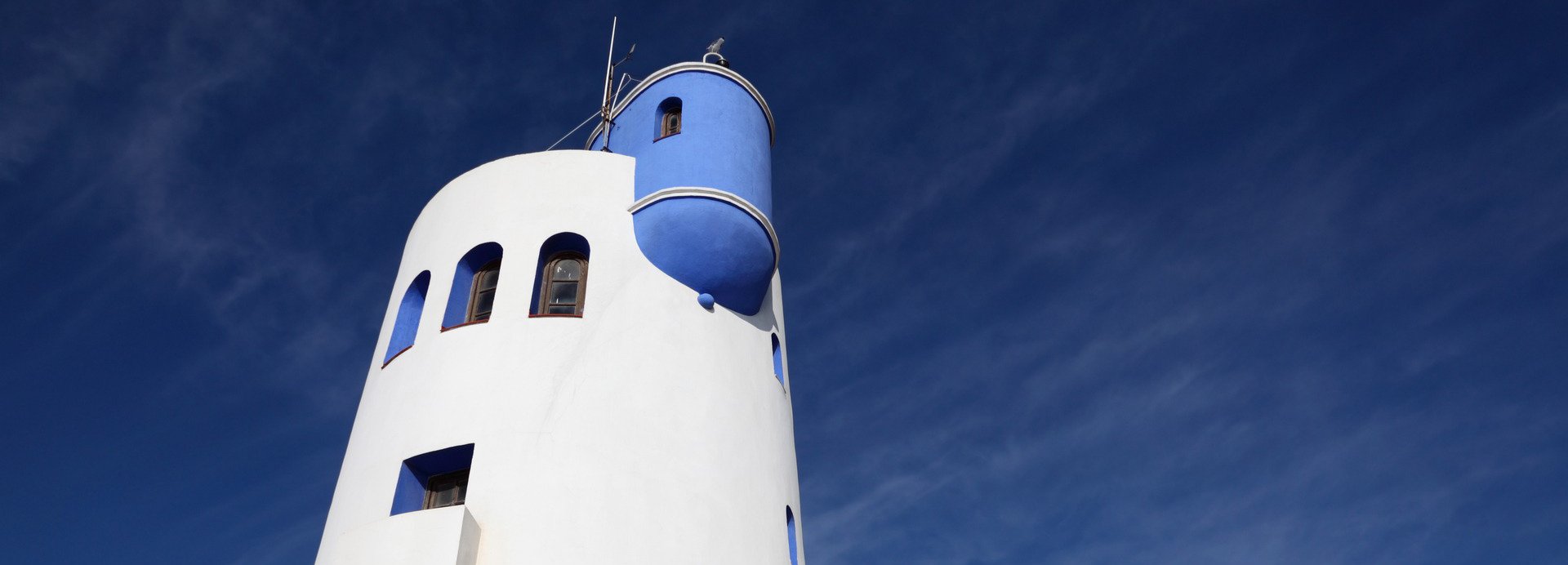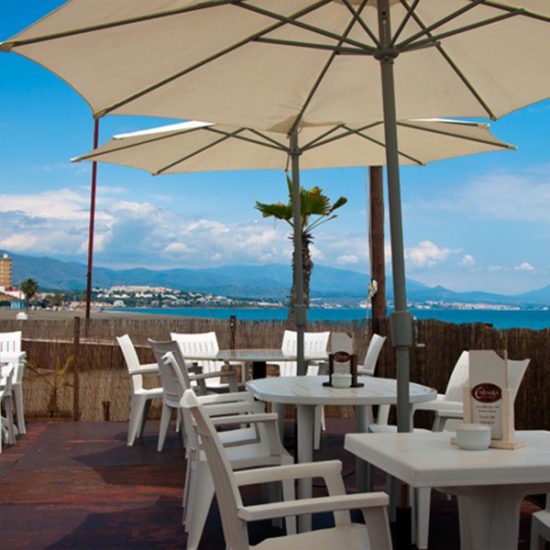About Manilva
Manilva
The municipality of Manilva is the furthest part southwest in Málaga province, and comprises the towns and villages of Manilva, San Luis de Sabinillas, Puerto de la Duquesa, Castillo de la Duquesa and Hondacavada, the area inland from the southernmost coastal urbanisation Martagina. It is 18 kilometres northeast of Sotogrande.
In 1530 the Duke of Arcos, to re-populate a land laid bare by Barbary pirates, encouraged people to settle on a hill called Los Mártires by giving them parcels of land to work. A church was built, Santa Anna and the town of Manilva was founded.
The original church was destroyed in an earthquake in 1722 and rebuilt in 1776 in Calle Iglesia. At this time Manilva was part of the municipality of Casares and remained so until it was given the ‘royal privilege of town’ on the 26th October 1796 after a legal dispute that lasted almost 100 years.
Whitewashed older houses cluster round the church with the newer build surrounding. The main street, Calle del Mar, is a pedestrian precinct with a few bars and a mini supermarket. At the northern end of Calle del Mar, Central Café has a conservatory at the back that has stupendous views over the Rio Manilva valley that contains many of the small vineyards that contribute their grapes to the cooperative. Locally produced wine may be purchased in plastic bottles from a few houses in Manilva town.
The wine produced by the cooperative carries the Malaga DO region label. In 2014, an entrepreneur, Argimiro Martinez Moreno started a business, Nilva Enoturismo SL. Under the Nilva label Argimiro is producing about 6,000 litres of wine per year from the locally grown Moscatel grape. The first, a white seco, is reminiscent of a fino sherry from Jerez and Argimiro tells us this is due to the similar soil in which the grapes are grown. The second is a semi-seco produced from grapes that have been left in the sun for 2 days. The third is a sweet desert wine produced from grapes left in the sun for up to six days.
When not supervising the wine making Argimiro runs the wine museum, a comprehensive account of the winemaking history of the area, all in Spanish, and offers wine for tasting from the small shop. He is hopeful of gaining a coveted label for Manilva wines.
The Vendimia de Manilva takes place during the first weekend in September. Started in the 1960s this grape festival is hugely popular and draws in hundreds of people. The festival starts on the Saturday morning and lasts until the early hours of Monday. Monday itself is a local holiday. You can expect a procession, street stalls, flamenco dancing, music, grape treading in the traditional manner on the Sunday evening followed by live music and dancing. You will also be able to sample this year’s grapes and wine.
San Luis de Sabinillas
From Sotogrande it is an easy 15 kilometre drive north up the A7 to the town of San Luis de Sabinillas, part of Manilva municipality.
Once upon a time, not too many years ago, if you were looking for an unspoilt Spanish working coastal village, then you may well have travelled to San Luis de Sabinillas. Until the early 2000s the main road, the N340, passed through Sabinillas. It was a single-track road with dust verges.
Sabinillas resembled a Wild West town with a row of shops either side of the road and a main street that went down to the beach. Cottages were built directly on the sand. An area of waste ground at the south end of the town provided space for the huge Sunday market that was the highlight of the week for many residents and visitors alike. There were a few urbanisations, fewer supermarkets and a scattering of bars and restaurants.
Today all that has changed. The A7 dual carriageway arrived almost overnight, demolishing old bodegas as it came. Pavements were installed and an underpass dug beneath the centre of town. Apartment blocks sprang up in serried ranks on the inland side of the road and the paseo was built, doing away with the beachfront cottages and providing locales for beachside businesses.
Sabinillas suddenly came of age and to make it official Mercadona opened its doors closely followed by a large Supersol. There are now shops and locales offering every conceivable product and service.
But some things never change. The older fishermen still gather at the south end of the paseo first thing in the morning and decide whether or not to take their boats out and the market gardeners still cultivate their plots down the road to Manilva, known locally as the Roman Oasis road. The Sunday market has moved. It is no longer in the town providing passing trade to the bars and cafes, it is on the new feria ground that is off the same Roman Oasis road. The road acquired its name from a restaurant called the Roman Oasis that was started by Paul Hickling in 1982. He named the restaurant after the authentic Roman Baths a little further up the sulphurous Rio Manilva. Paul opened his restaurant for the last time in 2018.
Sabinillas has become a seaside resort. Its beach is long and wide with easy access to the sea. Lifeguards in tall wooden towers are watchful during the summer season. Beach bars and chiringuitos provide food, drink and shelter and within the town there are some fine restaurants serving every conceivable type of cuisine, Spanish, Indian, French, Italian even British. Despite its inauspicious recent past San Luis de Sabinillas is a friendly town. There are any number of pavement cafes where you will be served with a smile and where you in turn can wish passers by ‘buenos dias’ knowing you will receive a kindly acknowledgment.
Puerto de la Duquesa
What makes Puerto de la Duquesa, only 13 kilometres northeast of Sotogrande, so popular with the ex-pat population and tourists and why is it known as ‘The best kept secret on the Costa del Sol’?
The answer is that it has no high rise hotels, all the accommodation available in the area is apartments or houses and to date no package holiday company has exploited the area.
The marina and residential area of Puerto de la Duquesa is situated between two fantastic beaches and within an easy walk of two similarly unexploited Spanish villages, Sabinillas to the north and Castillo to the south. I suppose I should also mention the 300 days of sunshine per year.
Purpose built in the 1980s Duquesa sits around three sides of a marina that berths boats that range from the few hundred-thousand-pound gin palace that hardly ever leaves the safe confines of the harbour to the workhorse dinghy with an engine that putters out each morning for fish. Its owner no doubt prefers the ease of the marina to the more traditional methods of getting your boat in the water seen at Sabinillas and Castillo.
There are no amusement arcades, no pleasure beach and no big dipper. There are no night clubs, well, none similar to those found in Marbella or Puerto Banus anyway. Entertainment is all home grown. Many of the dozen or so bars have karaoke or other forms of live entertainment in the evening, limited only by the imaginations of their owners, and there is a whole raft of restaurants offering food from just about every nation, every continent certainly. The evenings tend to be lively with people enjoying the night air alongside the atmospheric waterfront, perambulating from venue to venue.
During the day things tend to be more relaxed. There are the two beaches already mentioned. The one to the south between Duquesa and the small fishing village of Castillo de la Duquesa is a sheltered bay with rocks at the southern end that are ideal for snorkelling. You will see bass, wrasse, the occasional octopus, crabs and lobsters and anemones of all colours, that really is a magical experience. Right in the centre of this bay is another little secret I found some years ago, a small outcrop of rock protruding from the smooth sandy bottom, never revealed at low tide and covered in the tastiest mussels.
For the golfers, Duquesa Golf Club overlooks the marina. It is reached by leaving the marina area and passing under the coastal road, previously the N340 and now the A7. It is a Robert Trent Jones course, built in 1986. The restaurant there is a franchise and considered to be very good. It certainly has good views.
Castillo de la Duquesa
Twelve kilometres northeast of Sotogrande, this small white fishing village, part of Manilva municipality, nestled alongside its 18th century castle is as unspoilt as any place you are likely to find on the coast. The castle was built in 1767 and is one of the finest examples of 18th century fortifications in this part of Spain.
It originally housed a combination of cavalry, infantry and artillery to defend the coast from Barbary pirates. In the early 19th century the French invaders installed French troops. More recently, within living memory, the castle housed the poorer families of Castillo. Now it is occupied by the Department of Culture of the Town Hall of Manilva and houses a museum displaying artifacts dating back 3000 years, all found in the municipality.
The small, white, fishing cottages, once fronting directly on to the beach, now protected by a sea wall, surround a village square, the Plaza de los Banos Romanos. There is a small, ornately decorated church, a couple of bars and a number of fish restaurants. During the summer, June to September, you will find two traditional chiringuitos open, one at each end of the village, Malibu to the west and Andres y Maria to the east. Both have sunbeds and umbrellas for daily hire. Alongside Malibu the local fishing boats rest safely above the high-water mark, drawn from the sea by a windlass the design of which has not changed for 2,500 years.
Castillo has two beaches separated by some interesting rocks, a cove and rock pools. The Malibu beach extends quite a few kilometres west, the part that Castillo owns is a wide strip of fine gravel that is extremely popular with the local Spanish families. The Andres y Maria beach is a small bay protected by rocky reefs at each end. This bay provides safe swimming for all the family and some good snorkelling.
The visitor to Castillo may wonder at the excavated works that seem to surround the village. A clue is in the name of the village square. In Roman times, between 100 AD and 500 AD, Castillo was a thriving town, much larger than the present day urban area. Its products were the then fashionable fish sauce, garum, fish and salt. These products were exported by sea in amphorae, many of which were made in Malaga. Behind the easterly beach and beneath an apartment block built in 2006 is the site of the necropolis that would have been just outside the town walls. Just west of the apartments, and still visible, are the foundations of the fish preserving tanks. North of the castle, that seems to have been built on the site of the former Roman port and associated watchtower, was a combined residential and commercial area whilst to the west, alongside the children’s playground is a Roman villa complete with its own thermal baths. When finance is available the Ayuntamiento plan to make the area an Archaeological Park.
Things to do in Manilva
No experiences match your criteria
Holiday property rentals in Manilva
To view the beautiful holiday property rentals we have available in and around Sotogrande, please click the below button.



